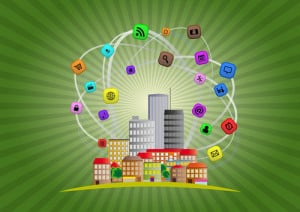
Businesses and government entities are using smart city technologies to improve targeted operational areas such as traffic management, waste management, parking, smart lighting, and more. While many of these efforts will likely deliver short-term success, the organizations deploying them may be limited in future efforts due to the use of outdated architectures.
What’s needed is an event-driven architecture (EDA) that will allow those developing smart city initiatives to reap success today, while enabling innovative applications and collaborative efforts with other smart city projects in the future.
Additionally, the adoption of EDA will allow a transition from current efforts that mostly monitor conditions passively to solutions that incorporate real-time operational intelligence. Such a transition, rather than using historical trends, will allow actions to be taken as situations unfold. COVID-19 has demonstrated the need for immediate actions based on real-time data.
Looking to the future, EDA-powered smart city applications could take things to a higher level, enabling automated response systems in the future.
The Need for a Future-Proof Architecture
The concept, goals, and purposes of smart cities are evolving, requiring a necessary change in thinking about how to plan, develop, and run them. The reason: The promise of smart cities has stagnated due to the use of the wrong tools. Essential to the success of any smart city initiative or effort now and in the future is an open, scalable, event-driven platform that will enable improved city operations and services, while providing a higher quality of life for citizens.
To read more about smart cities and event-driven architecture, view the full special report here: Full Story PDF.




























